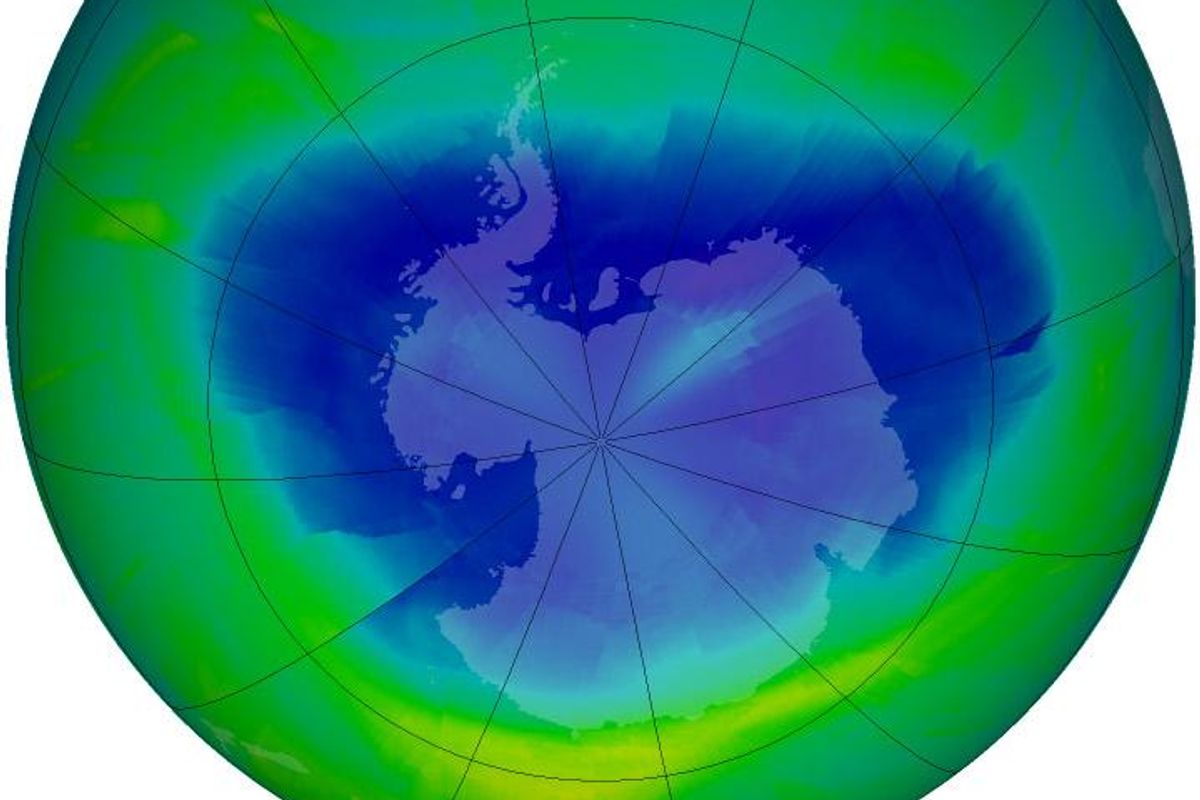
There are many reasons to worry about climate change’s effects and whether the world’s leaders are brave enough to make the bold decisions necessary to abate the growing crisis. But a new report from the United Nations shows that when people come together and follow the science, it’s possible to stop environmental disasters before they happen.
An executive assessment from the UN has found that the hole in the Earth’s ozone layer is on track to be completely healed within the next two decades. If current policies remain in place, the ozone layer should recover to 1980 levels by around 2066 in the Antarctic, 2045 in the Arctic and 2040 throughout the rest of the world.
The hole was first discovered by scientists in 1985 above Antarctica and it caused immediate worry. According to Discover magazine, the ozone layer acts as the planet’s sunscreen and without it, we’d be exposed to harmful ultraviolet rays that cause skin cancer and cataracts. The radiation is also harmful to marine life and plants and would cause a major disruption to the world’s food supply.
“In the upper stratosphere and in the ozone hole we see things getting better,” Paul A. Newman, co-chair of the scientific assessment panel of the Montreal Protocol, said according to the Associated Press. He added that the two biggest contributors to the hole, chlorine and bromine, have dropped from their peaks in the ’90s.
That bromine and chlorine levels “stopped growing and is coming down is a real testament to the effectiveness of the Montreal Protocol,” Newman said.
The Montreal Protocol is an international agreement signed in 1989 that helped eliminate 99% of ozone-depleting chemicals including chlorofluorocarbons (CFCs). At the time, these were found in spray cans, refrigerants and air-conditioning units.
u201cGood climate news: The ozone layer is on track to recover within 4 decades.nnThe healing of the Earth’s invisible shield is an inspirational example of how the world can come together to address global challenges like the climate crisis.nnMore from @WMO: https://t.co/Dh0h8kkPnYu201d— United Nations (@United Nations)
1673283660
Although much of the world has stopped using CFCs, they can linger in the atmosphere for a century.
“The protocol marks an important milestone for the future quality of the global environment and for the health and well-being of all peoples of the world,” former President Ronald Reagan said after the agreement was signed in 1988. “Unanimous approval of the protocol by the Senate on March 14th demonstrated to the world community this country’s willingness to act promptly and decisively in carrying out its commitments to protect the stratospheric ozone layer from the damaging effects of chlorofluorocarbons and halons, but our action alone is not enough.”
“It’s a bit like waiting for paint to dry, you just have to wait for nature to do its thing and flush out these chemicals,” David Fahey, a scientist at National Oceanic and Atmospheric Administration, said according to The Guardian.
u201cGood news from #AMS2023: The ozone layer is on track to recover within four decades.nnPress release u27a1ufe0f https://t.co/htPbNDJ9VUnnExecutive summary u27a1ufe0f https://t.co/yO6o2dVOd3nnPartners ud83eudd1dud83cudffd @UNEP, @NOAA, @NASA, @EU_Commissionu201d— World Meteorological Organization (@World Meteorological Organization)
1673276414
If political leaders hadn’t taken action back in the ’80s, we would be having some serious problems in 2023. World leaders should take the positive lessons learned by the fight against ozone depletion and use them toward fixing climate change before it becomes irreversible.
Unfortunately, the fight against climate change is more difficult because greenhouse gasses stay in the atmosphere much longer than CFCs and asking people to change their refrigerants is a lot easier than asking them to stop driving cars.
“CO2 is another order of magnitude when it comes to its longevity, which is sobering,” Fahey said. “Getting every person on the planet to stop burning fossil fuels is a vastly different challenge.”
